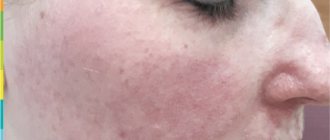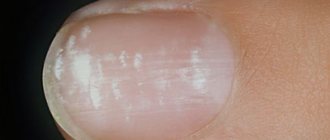A lump on the eyeball is a more common than is commonly believed. For many people, such formations are more or less noticeable depending on the type of lump and the stage of its development.
In most cases, these balls on the protein do not affect vision , and in such cases it is recommended not to remove them.
For your information! There are situations when lumps or lumps need to be removed as quickly as possible (especially if they are malignant lumps).
Reasons for the formation of a cataract
Any inflammatory process due to corneal injury, burn, surgery, inflammatory or infectious disease can lead to the formation of a cataract. With any pathology of the cornea, an infiltrate is formed (accumulation of elements of cells, blood, lymph). It can resolve without a trace if it forms in the superficial layers of the cornea. And it can leave opacities in the form of scar connective tissue when located in the stroma of the cornea. The resulting changes cause temporary or permanent loss of vision.
Types of cataracts
An eyesore can be congenital or acquired. The congenital form is usually caused by intrauterine infection of the fetus during gestation and is often accompanied by other pathologies, for example, clouding of the lens or complete blindness of the baby. Acquired cataracts are the result of various eye injuries or diseases.
Also, cataracts can develop separately and have characteristic symptoms without complications or be combined with other eye pathologies: clouding of the lens, synechiae (adherence of the cornea to the iris or soldering of the iris to the lens and cornea).
In addition, the eyesore may be adhesive and ectatic. In the first case, the cornea fuses (sticks together) with the iris due to significant damage or severe inflammation. Ecstatic leukoma is accompanied by curvature of the cornea, its protrusion.
Forms and types of cataracts
According to the nature of origin, congenital and acquired forms of leukoma are distinguished. Congenital occurs as a result of transplacental infection. Transmitted from mother to fetus. In the acquired form, the formation of a cataract occurs due to external factors.
According to the severity of turbidity, they are distinguished:
- cloud - minor changes;
- corneal spot - partial spread of leukoma;
- thorn - dense and extensive localization.
The cataract can be flattened, convex, or fused to the iris.
According to its location, the leukoma can be central, when the cataract completely or largely covers the pupil. Total - the cornea is completely closed. In these cases, visual acuity is significantly reduced. With peripheral leukoma, the pupil is not affected by clouding and vision does not decrease.
Symptoms and diagnosis
- A spot of various shapes, pale yellow (fat deposits) or white, appears on the cornea;
- Decreased visual ability;
- A veil forms before the eyes, images and shapes of objects are distorted.
To diagnose this disease, doctors use an ophthalmic lamp. In some cases, there are small opacities, as a result of which they are difficult to notice with the naked eye in the mirror, however, if the leukoma is located in the visual area, then it provokes discomfort. If therapy is not started in a timely manner, the clouding may increase in size.
Treatment of a cataract
Treatment of cataracts is carried out surgically. For slight superficial clouding in the central part of the cornea, an excimer laser (keratectomy) is used. When a persistent cataract has formed, they resort to keratoplasty - transplantation of the cornea. If the opacification does not involve the deep layers of the cornea, lamellar keratoplasty is performed. Penetrating keratoplasty is performed for optical therapeutic purposes. If keratoplasty is ineffective, keratoprosthesis is performed (replacement of the affected area with an artificial corneal implant).
1. Causes of white spots on the eyes. The reasons why a white spot forms on the eye are different, and are divided depending on the type of spot, as such. 1.1. Congenital spots. Congenital spots are also called nevi, and the reason for their occurrence lies in violations of the genetic code that forms the child’s body in the womb. The appearance of a nevus is influenced by the presence of similar characteristics in parents and older relatives. Usually the speck is not only light, but also dark brown or black in color, slightly lumpy in shape, convex, but most often flat. As a rule, congenital spots are not dangerous either for infants or for adults, if they do not progress and do not increase in size. 1.2. Red dots. The reasons that cause red dots include: • Sudden and unpredictable changes in blood pressure, leading to rupture of capillaries. • Excessive physical activity (excessive passion for sports, difficult childbirth, work in the country, overwork). One of the common causes of red dots, again increasing blood pressure and causing hemorrhage of the capillaries. • Sitting at the monitor for a long time. The more tired your eyes are, the more likely it is that intraocular pressure may increase. • Constant increase in intraocular pressure as a pathology. You should contact an ophthalmologist for treatment. 1.3. Yellow and floating spots. When turning the eyeballs, you can notice yellow spots, the reason why they appear is quite trivial: this is eye fatigue due to long reading or working on the computer, a lack of vitamin A, as well as the harmful effects of UV rays on the eye whites. With the so-called “floating” spots, everything is somewhat more complicated. They are noticed when the gaze is directed at some point, and most often this indicates the beginning of the process of retinal detachment. The floating spot is transparent, but the person feels that it interferes with his vision. A child with such a pathology who cannot yet speak may cry or rub his eyes in an attempt to remove the spot that is bothering him. 1.4. Floaters before the eyes. There are two reasons that can lead to floaters: damage to the ocular vitreous body and various diseases, the side effects of which affect the eyes due to the specific nature of their course. If the vitreous body is exposed to adverse environmental conditions or bodily aging, the protein gel-like structure surrounding it changes its shape, which actually leads to destruction. Normally, the vitreous body is transparent, but due to changes in its molecular composition, it partially becomes opaque and very soon a person notices small sparkling dots in the eye - floaters. There are a huge number of diseases that can cause this phenomenon in the body: • inflammation in the eyes; • bleeding and rupture of capillaries; • traumatic brain injuries of various types; • injury to the eyeballs; • changes in blood pressure; • myopia; • farsightedness; • poisoning; • iron deficiency in the blood; • obesity; • heart and cardiovascular diseases; • endocrinological pathologies and diseases; • osteochondrosis; • pathologies of the pancreas. 1.5. Walleye (leukoma) If a pronounced white dot appears on the eyeball, most likely it is leukoma, or a walleye in common parlance. Regardless of the type, they can be caused by such causes as chemical burns, syphilitic and tuberculous keratitis, infectious diseases of the eye organ (for example, trachoma, ulcers), conjunctivitis, chemical burns, as well as traumatic causes (beatings, unsuccessful eye surgeries, occupational injuries ). 1.5.1. Types of leukoma. The following types of leukoma are distinguished in adults and children: • Central leukoma. In this type, the rim of the pupil is either partially or completely covered by a white cataract; due to its dangerous location, the leukoma contributes to difficulty seeing, and then to loss of vision. • Total leukoma. The entire eyeball is covered with a white spot, the person sees nothing, and can only focus on light sensations. • Peripheral leukoma. In this case, the thorn is located at some distance from the pupil, and therefore practically does not interfere with the person in his daily life. In addition, the cataract is divided according to location and cause: • cataract of the cornea of the eye; • thorn in the iris; • a cataract with clouding of the lens; • cataract thorn; • a thorn from atrophy of the eye organ. 1.6. Black spots. Black spots occur due to destructive changes in the ocular vitreous body and circulatory pathologies. Most often this is a consequence of a disease such as macular degeneration. However, there are a number of other reasons: • Age - over 45-47 years; • Diseases of vascular and endocrine organs; • Changes in blood pressure; • Abuse of smoking substances, alcohol, drugs, and unhealthy pastime in general. 1.7. Changes in corneal structures. When the cornea is exposed to eye diseases or a hostile environment, its structure can change at the microscopic level, making itself felt by clouding and blurred vision. At the beginning there appears a small point through which the eye cannot see. Then the white spot on a person's eye grows if the disease that caused it develops. However, sometimes clouding does not affect the function of the eye, and a white spot appears on the eyelid or other parts of the eye. Those suffering from conjunctivitis, syphilis, tuberculosis and keratitis of various etiologies are especially susceptible to changes in the corneal structure. 1.8. Transformations in the lens. The cause of transformations in the eye lens is usually cataracts and other diseases affecting this part of the eye. This happens because the disease causes degenerative processes inside the lens, which manifests itself in the form of spots that a person, to his displeasure, feels very well - this is almost always a symptom of cataracts. 1.9. Retinal transformation. The key cause of harmful changes in the retina is a disease called retinal angiopathy. This is a vascular disease; before its onset, a person suffers from circulatory disorders; during the course of the disease, the tissues of the eye receive less oxygen, and vision reacts to this by the appearance of white spots. 2. Additional symptoms. In addition to the actual presence of a spot in the eye, the patient may experience symptoms such as pain, blurred vision, pain, a feeling of a foreign body in the eye, photophobia, and excessive tears. In children, you may notice increased excitability, active rubbing of the eyes, crying, and avoidance of looking into the affected area of vision. 3. Diagnostics. In the modern world, there are diagnostic methods such as: • eyeball refraction test; • Ultrasound of the eyeball and fundus; • determination of the state of the vascular system; • visual field test; • examination of the eyeball using ophthalmological instruments; • measurement of arterial and intraocular pressure; • MRI of the eye; • diagnosis of internal organs depending on the cause of the disease. 4. Treatment of white spots on the eyes. If the spots do not interfere with life, then no treatment is prescribed, they wait for development and changes. Sometimes the stain goes away on its own. But it happens that it increases in size and continues to interfere with the patient. Fortunately, there are still ways to cure it: • if the cause is cataract, then surgery is performed; • if there is an infection, the doctor prescribes appropriate medications; • if there are loads on the body, the patient should minimize them; • if the cause is congenital characteristics of the body, the white spot must be removed surgically; • in case of inflammation, white spots are treated with eye drops; 4.1. Treatment methods for leukoma. • plastic surgery of the ocular cornea; • corneal transplant surgery from a donor; • endothelial transplant surgery; • drug treatment (usually after surgery); • folk remedies (rinsing with sea salt, visiting saunas and baths, drinking eyebright decoction, using drops from Siberian fir resin). During treatment of leukoma, physical activity, stress and adverse effects on the operated organ are contraindicated. 5. Which doctor should I contact? First of all, they turn to an ophthalmologist and an ophthalmologist. Further, a comprehensive appointment with other specialists may be required (prescribed by an ophthalmologist/ophthalmologist). It is important to follow all their recommendations regarding white dots that appear on the pupil. 6. Prevention of spots and dots in the eyes. For prevention, the eye structure is strengthened; a person should lead a healthy lifestyle, drink multivitamin complexes, and visit an ophthalmologist annually. You need to take special care of your health if a spot has already appeared, so that it does not grow and cause dangerous pathologies. It is also useful to do eye exercises every day and help your child do them too. 7. Conclusion. Sometimes a white dot before the eyes is a sign of danger, so it is important not to forget about treatment. Lost time can result in catastrophic consequences for both an adult and a fragile child.Prevention
Preventive measures include preventing eye injuries, promptly consulting a doctor at the first signs of ophthalmological diseases that can lead to the formation of a cataract.
You can undergo a comprehensive examination, biomicroscopy and receive surgical treatment for a cataract at the Optic-Center ophthalmology clinic.
Sign up
for an initial consultation with an ophthalmologist at the Optic Center clinic by calling
8-800-775-78-58
or on our website
Sign up for a comprehensive examination
Causes of xanthelasma and risk groups
Xanthelasma is a benign formation that affects the skin of the upper and lower eyelids of both eyes.
Xanthelasma initially manifests itself as single plaques. If there are a large number of them, plaques can merge into extensive yellow formations of varying degrees of intensity - xanthoma - and significantly worsen a person’s appearance. Apart from being visually unattractive, xanthelasma does not manifest itself in any way. There is no pain, no itching, no peeling, or any other unpleasant sensations. Considering the main cause of xanthelasma, risk groups are identified among people susceptible to xanthelasma:
- people over 45–50 years old;
- women (xanthelasma more often spoils the appearance of the fair sex, although similar cases are also recorded in men);
- people with chronic diseases, one way or another associated with impaired fat metabolism and metabolic dysfunction: diabetes, obesity, arterial hypertension, diseases of the thyroid and pancreas, liver, etc.
Causes of the disease
It is quite difficult to talk about the etiology of pinguecula, since it has not been fully studied. The disease in most cases develops against the background of progressive dystrophic or age-related changes occurring in the conjunctiva. Since the body's metabolic processes slow down with age, the rate of metabolism, including proteins and fats, decreases. Together, this leads to unwanted accumulations of these components, which contributes to the development of pinguecula.
Experts identify in the pathogenesis of this eye disease the degeneration of collagen fibers located in the stromal part of the conjunctiva, and the thinning of the epithelium as a consequence. This kind of change can be influenced by ultraviolet radiation, which is known to stimulate the production of fibrillar protein - elastin. It is synthesized by fibroblasts and, in turn, negatively affects the structure of the conjunctiva, leading to dystrophic changes.
Pinguecula often affects people who are exposed to the scorching rays of the sun for a long time.
Pinguecula can be the result of recurrent irritation of the conjunctiva by exhaust gases, smoke, ordinary wind, all kinds of toxic emissions (in particular industrial emissions), as well as chemicals. Some ophthalmologists believe that prolonged wearing of contact lenses also provokes the formation of tumors on the eye. But a number of studies have been conducted on this topic, the conclusions of which did not confirm the reliability of this theory. In addition, the pinguecula is formed against the background of injuries and scar changes in the membrane of the eye, as well as chronic inflammation (conjunctivitis). In approximately 50% of cases, the disease develops in the same form in both eyes, but it is characterized by relatively weak progression abilities (i.e., the growth barely noticeably increases in diameter), as well as a benign nature. With a small size, the pinguecula does not in any way affect the patient’s life.
At the initial stage of development, this pathology is characterized by a latent (asymptomatic) course, while the clinical manifestation is noted already with an increase in the volume of the tumor. Patients may also complain of some discomfort, manifested by a feeling of excessive dryness in the eye. In cases where the growth grows and causes discomfort to the patient, the ophthalmologist may recommend surgical removal of the pinguecula of the eye.
With periodic irritation of the growth, conjunctival hyperemia may appear - the person complains of a constant sensation of a foreign object in the eye, which leads to increased lacrimation. Rarely, this pathology provokes clouding of the cornea.
Eyesore (corneal clouding)
A few decades ago, it was much more common to see a person with a noticeable eyesore than it is today. This fact alone should inspire serious and justified optimism, clearly indicating the significant successes of ophthalmology in eliminating this optical and cosmetic defect.










